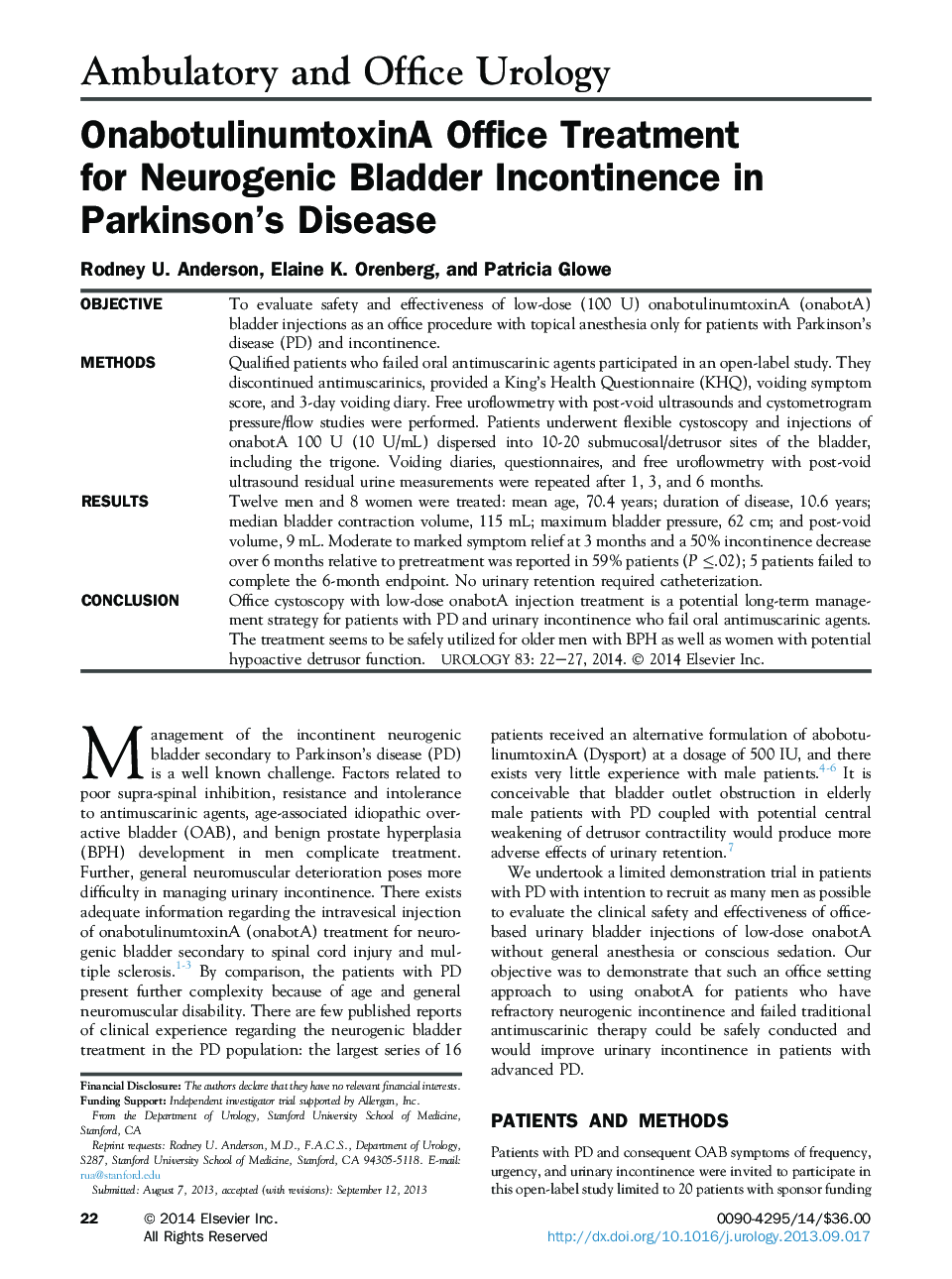| Article ID | Journal | Published Year | Pages | File Type |
|---|---|---|---|---|
| 3898869 | Urology | 2014 | 6 Pages |
ObjectiveTo evaluate safety and effectiveness of low-dose (100 U) onabotulinumtoxinA (onabotA) bladder injections as an office procedure with topical anesthesia only for patients with Parkinson's disease (PD) and incontinence.MethodsQualified patients who failed oral antimuscarinic agents participated in an open-label study. They discontinued antimuscarinics, provided a King's Health Questionnaire (KHQ), voiding symptom score, and 3-day voiding diary. Free uroflowmetry with post-void ultrasounds and cystometrogram pressure/flow studies were performed. Patients underwent flexible cystoscopy and injections of onabotA 100 U (10 U/mL) dispersed into 10-20 submucosal/detrusor sites of the bladder, including the trigone. Voiding diaries, questionnaires, and free uroflowmetry with post-void ultrasound residual urine measurements were repeated after 1, 3, and 6 months.ResultsTwelve men and 8 women were treated: mean age, 70.4 years; duration of disease, 10.6 years; median bladder contraction volume, 115 mL; maximum bladder pressure, 62 cm; and post-void volume, 9 mL. Moderate to marked symptom relief at 3 months and a 50% incontinence decrease over 6 months relative to pretreatment was reported in 59% patients (P ≤.02); 5 patients failed to complete the 6-month endpoint. No urinary retention required catheterization.ConclusionOffice cystoscopy with low-dose onabotA injection treatment is a potential long-term management strategy for patients with PD and urinary incontinence who fail oral antimuscarinic agents. The treatment seems to be safely utilized for older men with BPH as well as women with potential hypoactive detrusor function.
